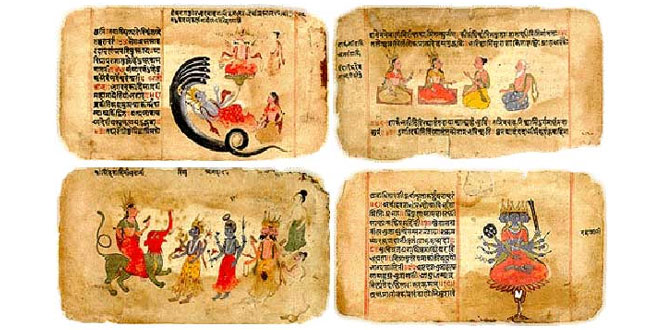Question: Write a note on the site of Inamgaon.
Answer:Inamgaon is a Chalcolithic settlement discovered near Pune in Maharashtra. Inamgaon is a historical site located on the banks of the river Ghod a tributary of the river Bhima. The economy of the people was based largely on farming and cattle rearing. Rice, beans, gram, wheat, lentils and barley were some of the main crops grown. The pottery found was red in colour with black designs.Stone tools and blade tools were also recovered from the sites. Tools and ornaments made of copper and gold have also been found. The houses were all rectangular in shape. Houses were mostly made of mud and thatched with grass. Storage facilities for grain were also available. Inamgaon was well-known for its ancient burials or graves. Vessels containing food and water were placed within the grave. The culture witnesses a decline from about 700 BCE.
Question: In what ways are the books we read today different from the Rigveda ?
Answer: The most important points of difference between the Rigveda and the modem books is that today books are written and read. The Vedas, instead, were memorised by students, and later passed on to the later generations by speaking, listening and then memorising.
Question: What kind of evidence from burials do archaeologists use to find out whether there were social differences amongst those who were buried?
Answer: The objects found in graves are usually different. Some skeletons were buried with a great number of pots, while some with just a few of them. Archaeologists have thus concluded that people were buried with objects depending upon their status.
Question: In what ways do you think that the life of a ‘raja’ was different from that of a ‘dasa’ or ‘dasi’?
Answer: In the society, ‘raja’ was one of the highest civil positions. ‘Rajas’ were the kings of the community, whereas the ‘dasas’/’dasis’ were the lowest position in society. The ‘dasas’/’dasis’ were slaves who were used for work. They were treated as the property of their owners. They were captured in war.
Question: Find out whether your school library has a collection of books on religion, and list the names of five books from this collection.
Answer: Do yourself with the help of your subject-teacher and school librarian. A sample set of five such books:
- The Mahabharata
- The Ramayana
- The Bible
- The Bhagwad Gita
- The Quran
 Class Notes NCERT Solutions for CBSE Students
Class Notes NCERT Solutions for CBSE Students



Such a nice app.